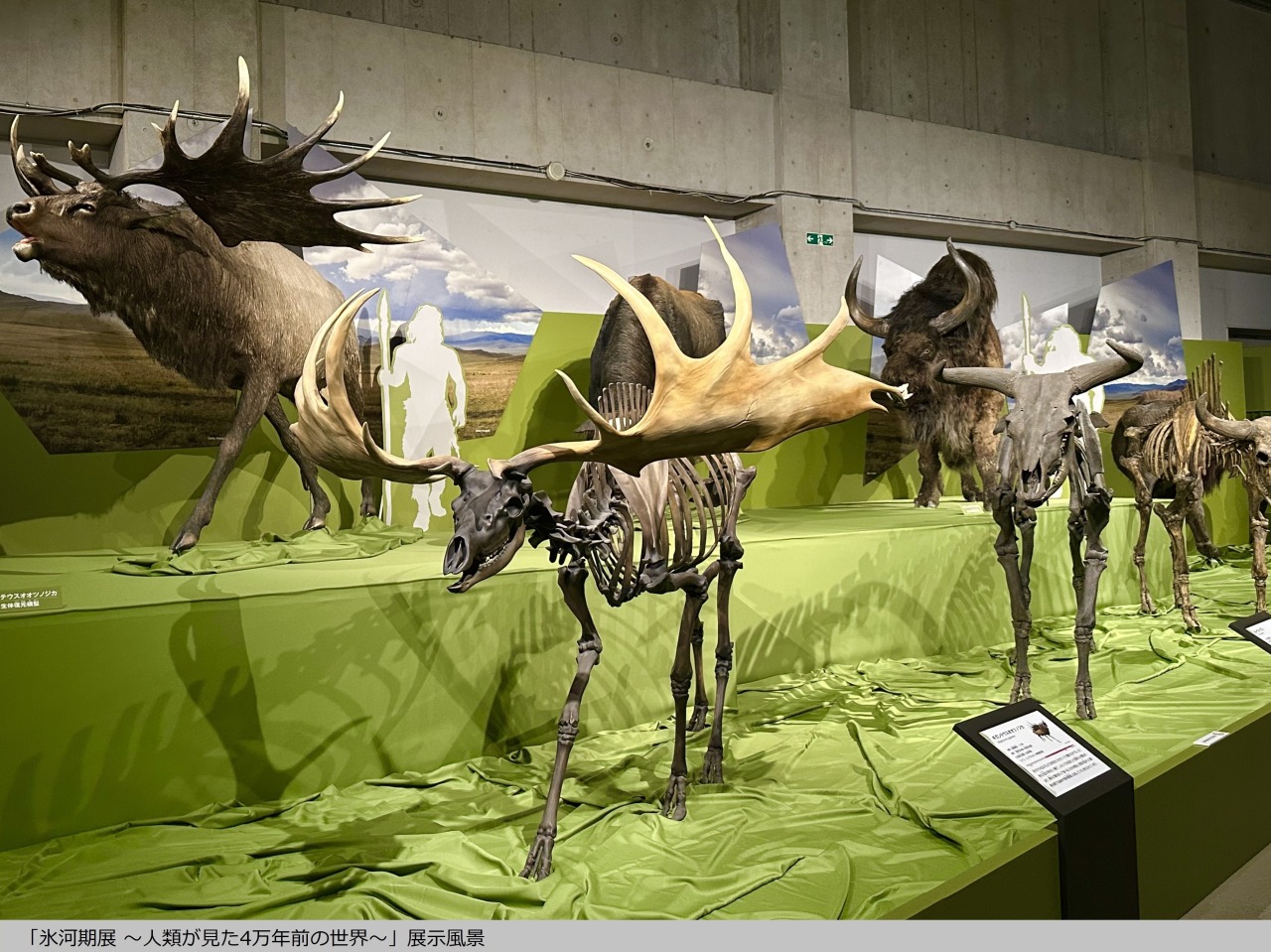
When you hear the word "ice age," some people may imagine a harsh world covered in ice and snow, completely different from the present. However, academically, an ice age refers to a period when ice sheets, thick masses of ice covering the land, existed widely on a continental scale.
Ice ages, when the climate is cold and ice sheets grow large, are alternated with interglacial periods, when the climate is relatively warm and the ice sheets retreat, in cycles of about 100,000 years, so ice ages are not always cold. Even though we live in a year 2025, when ice sheets exist in Greenland and Antarctica, the year may look a little different if you understand that we are in the middle of an interglacial period, or in other words, a glacial period, and are suffering from extreme heat every day.
The special exhibition currently being held at the National Museum of Nature and Science, "Ice Age Exhibition – The World as Seen by Humanity 40,000 Years Ago" (July 12th to October 13th, 2025), focuses on the state of the Earth around 40,000 years ago, during the last ice age.
The exhibition will showcase the lives of humans and animals who lived in environments completely different from those of modern times, as well as changes in their environments, using the latest scientific knowledge and powerful exhibits, including the actual skulls of Neanderthals and Cro-Magnons, which will be on display in Japan for the first time, as well as skeletal specimens of extinct animals, ecological reconstruction models, and archaeological materials.
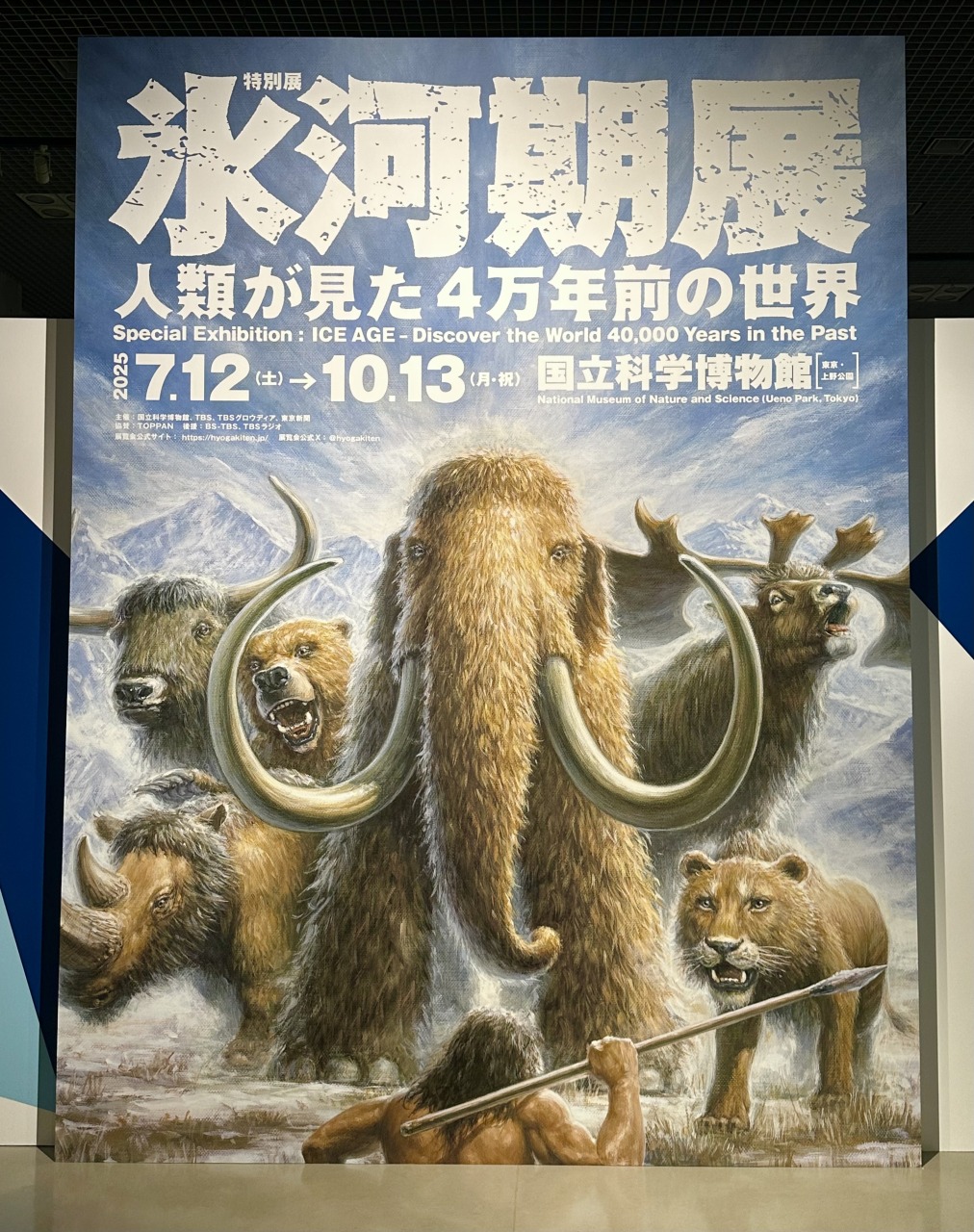
Entrance to the "Ice Age Exhibition"
Kenichi Shinoda, director of the National Museum of Nature and Science, who supervised the exhibition, said the following at the press preview:
"There are 8 billion human beings living in the world, but in reality we are all one species: Homo sapiens. There once were other species of humans in Europe and Asia, but by 12,000 years ago, only Homo sapiens remained. What kind of people and animals did our ancestors encounter after they left Africa 60,000 years ago? The main purpose of this exhibition is for visitors to experience where the animals that have become extinct lived and what they looked like. We hope that this exhibition will not only encourage visitors to reflect on our journey so far, but also give them an opportunity to think about how we should live as the environment changes due to global warming."
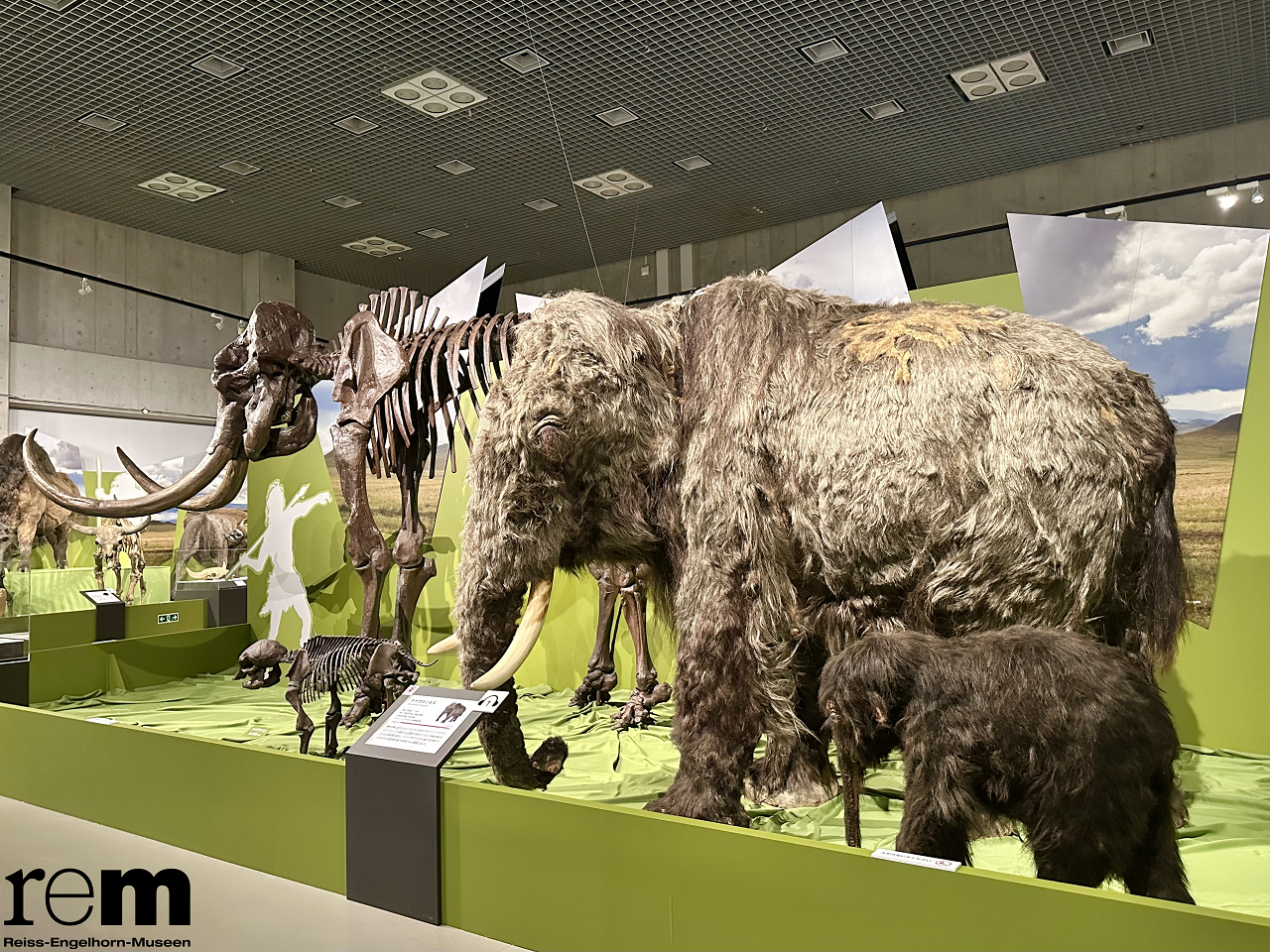
Woolly mammoth (living reconstruction model, skeletal specimen), Reiss Engelhorn Museum
Visitors are greeted at the venue by the majestic appearance of a woolly mammoth, which is said to have survived on the islands of Siberia and Alaska until thousands of years ago and is owned by the Reiss-Engelhorn Museum in Germany. This is one of the highlights of the exhibition and will catch your eye with its power, but don't forget to check out the cave lion rib with spear wounds, which is casually displayed just before it.
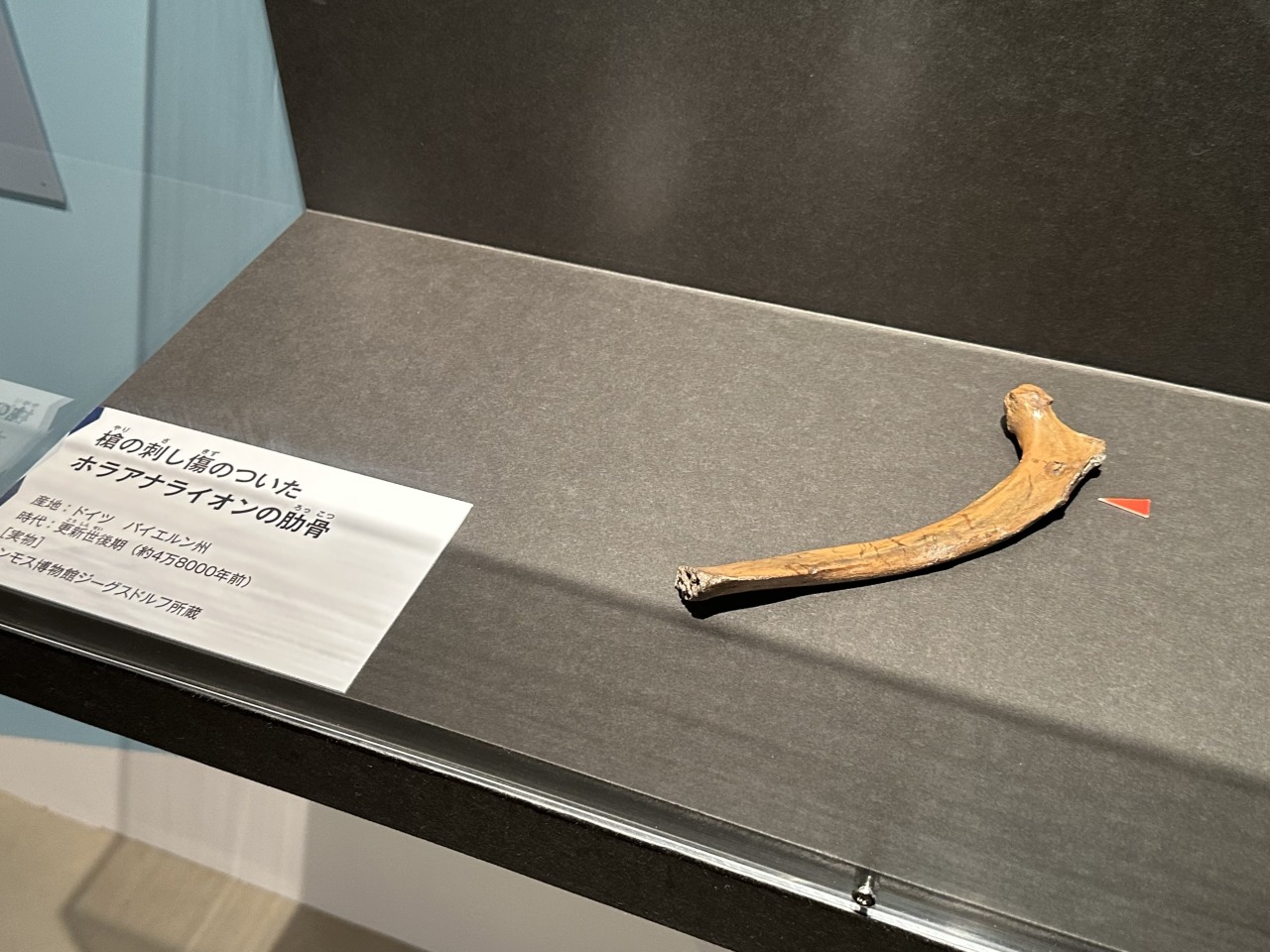
Cave lion rib with spear wounds [original], Mammoth Museum Siegsdorf
This 48,000-year-old fossil rib was excavated in southern Germany. Cave lions, a close relative of modern lions, often appear in murals and sculptures, and are known to have been a common prey for Neanderthals and Homo sapiens (Cro-Magnons). The spear marks indicate that our human ancestors faced off against animals roaming the frigid ice age, and lived tough lives, making this a fitting opening for the exhibition, overflowing with romance.
At its coldest point 30,000 to 20,000 years ago, the high latitudes of Eurasia experienced cooling and the formation of vast steppe tundra (areas of cold grassland and permafrost). In this environment, grassland-dwelling mammoth fauna, including woolly mammoths, cave lions, woolly rhinoceroses, and steppe pythons, thrived. These fauna, along with the giant deer and cave bear that had survived in forests since the interglacial period, and many other extant species, formed the megafauna of the last glacial period.
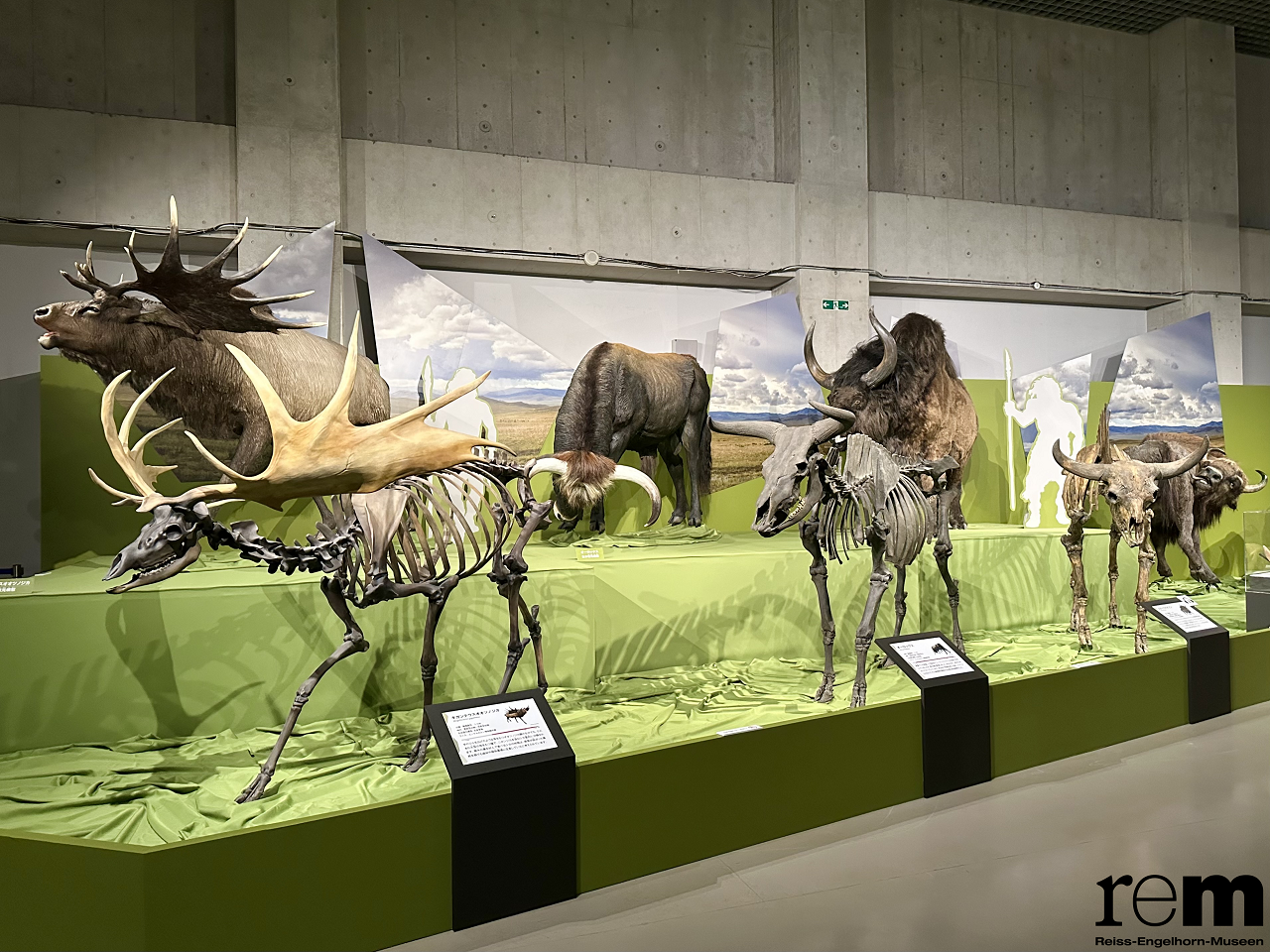
Exhibition view. On the left is a giant elk (biological reconstruction model, full skeleton), from the Reiss Engelhorn Museum collection.
"Chapter 1: The Animals of Europe in the Ice Age" displays fossils, full-body skeletal specimens, and reconstructed models of megafauna, and explores the mystery of their rise and fall while explaining the ecology of extinct and living species. The animals, with their impressive bodies and long fur to withstand the cold, give an idea of the harsh environment of the time.
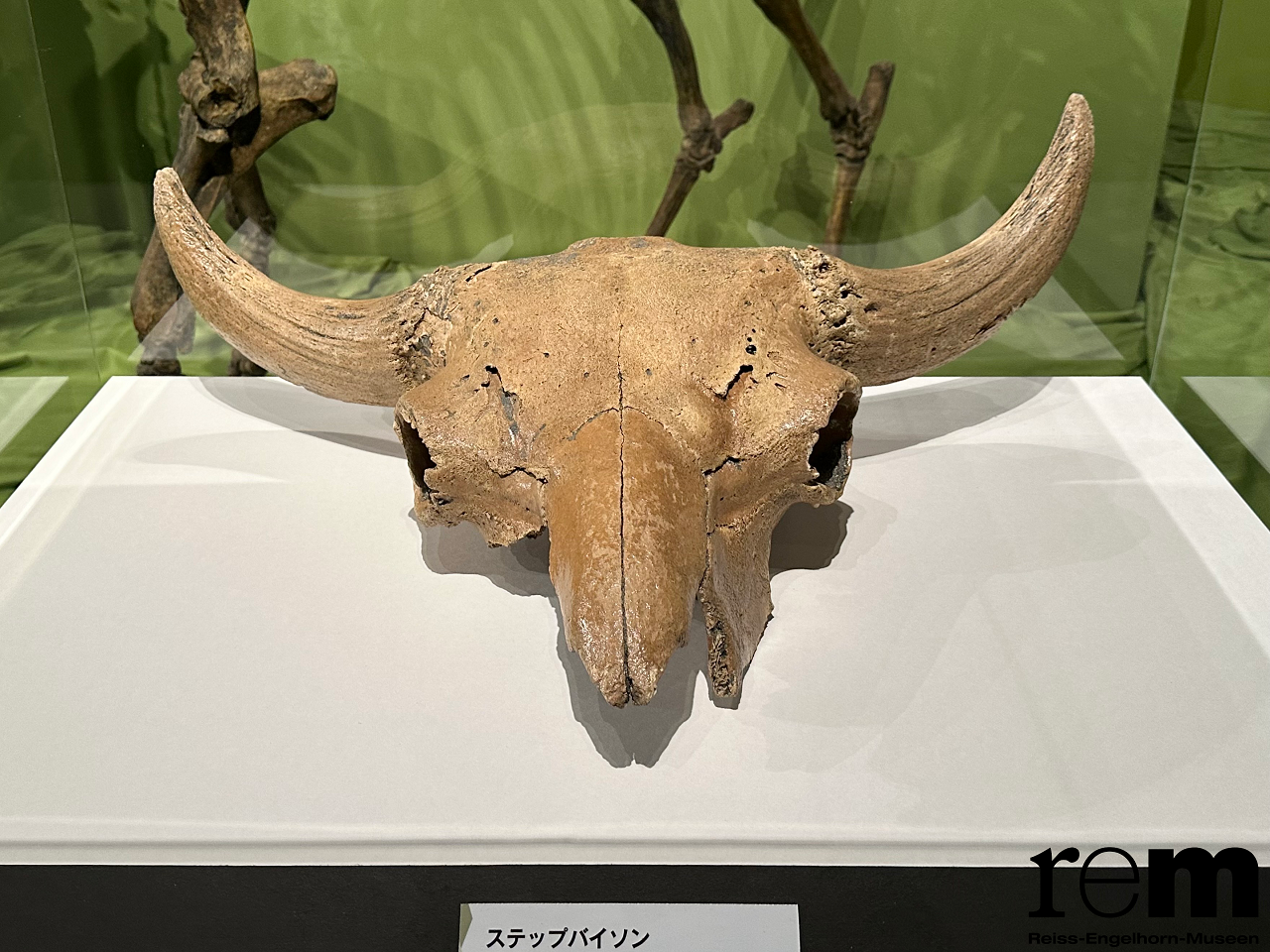
Steppe python (fossil skull [real]), owned by the Reiss Engelhorn Museum

Cave bear (biological reconstruction model, full skeleton), Reiss Engelhorn Museum

Woolly rhinoceros (biological reconstruction model, full skeleton), Reiss Engelhorn Museum
Characterized by their long fur that looks as if they are covered in cloth and their large hooves, the musk ox is a surviving member of the mammoth group and a member of the goat subfamily. 20,000 years ago, a sudden warming of the Earth caused the steppe tundra to shrink, and species adapted to cold climates and grassland-dwelling species gradually disappeared. However, the musk ox and the Arctic fox were able to move their habitats into the Arctic Circle, and so they continue to survive to this day.
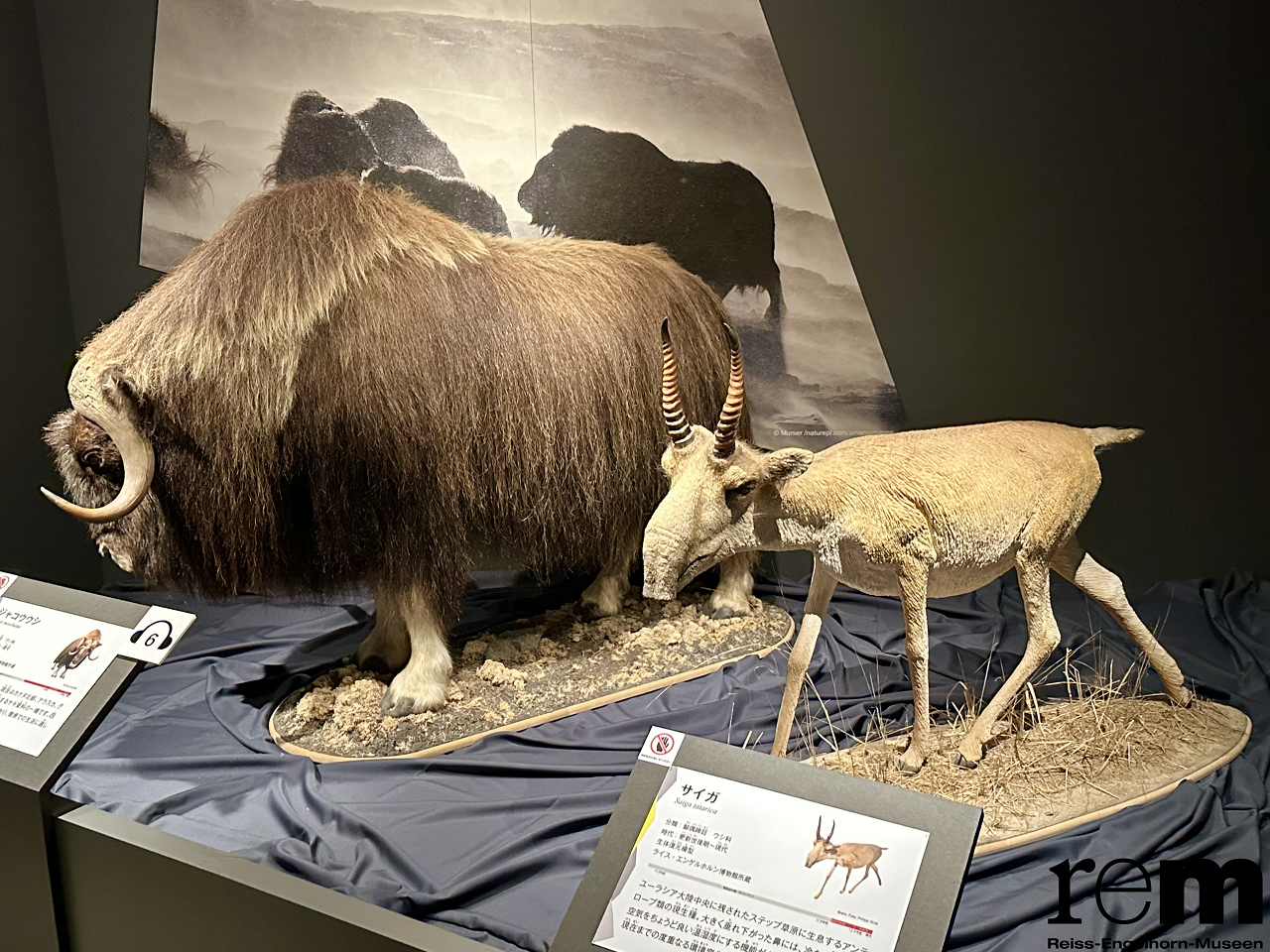
From left: Musk ox (stuffed specimen), Saiga antelope (reconstructed ecological model), Reiss Engelhorn Museum collection
The ancestors of Cro-Magnons originated in Africa about 300,000 years ago and spread across Eurasia about 60,000 years ago. At the time, another human species called Neanderthals lived in Europe, but they disappeared about 40,000 years ago.
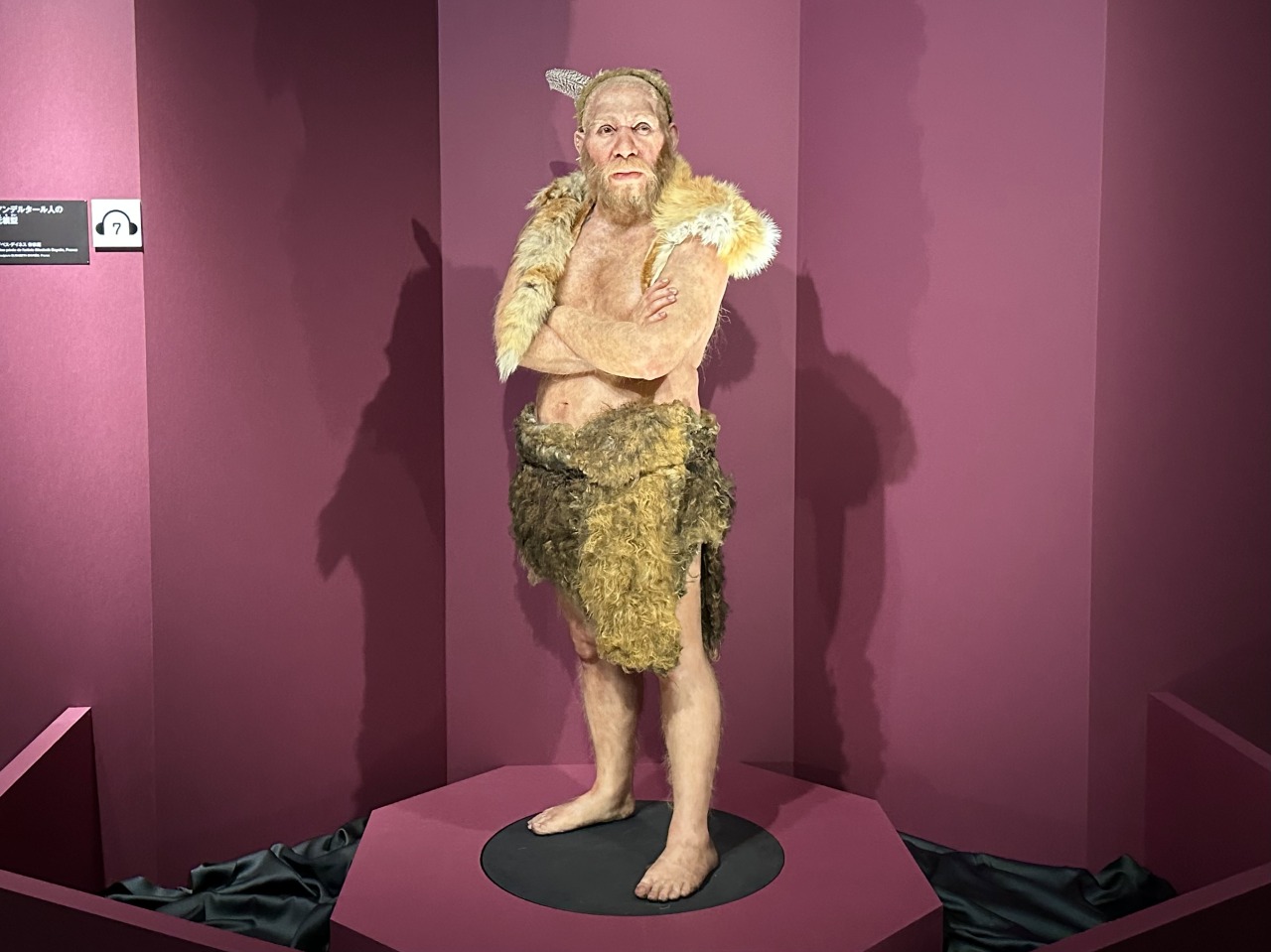
Reconstruction of a Neanderthal, National Museum of Natural History, Paris ©2019 Sculpture ELISABETH DAYNES, France
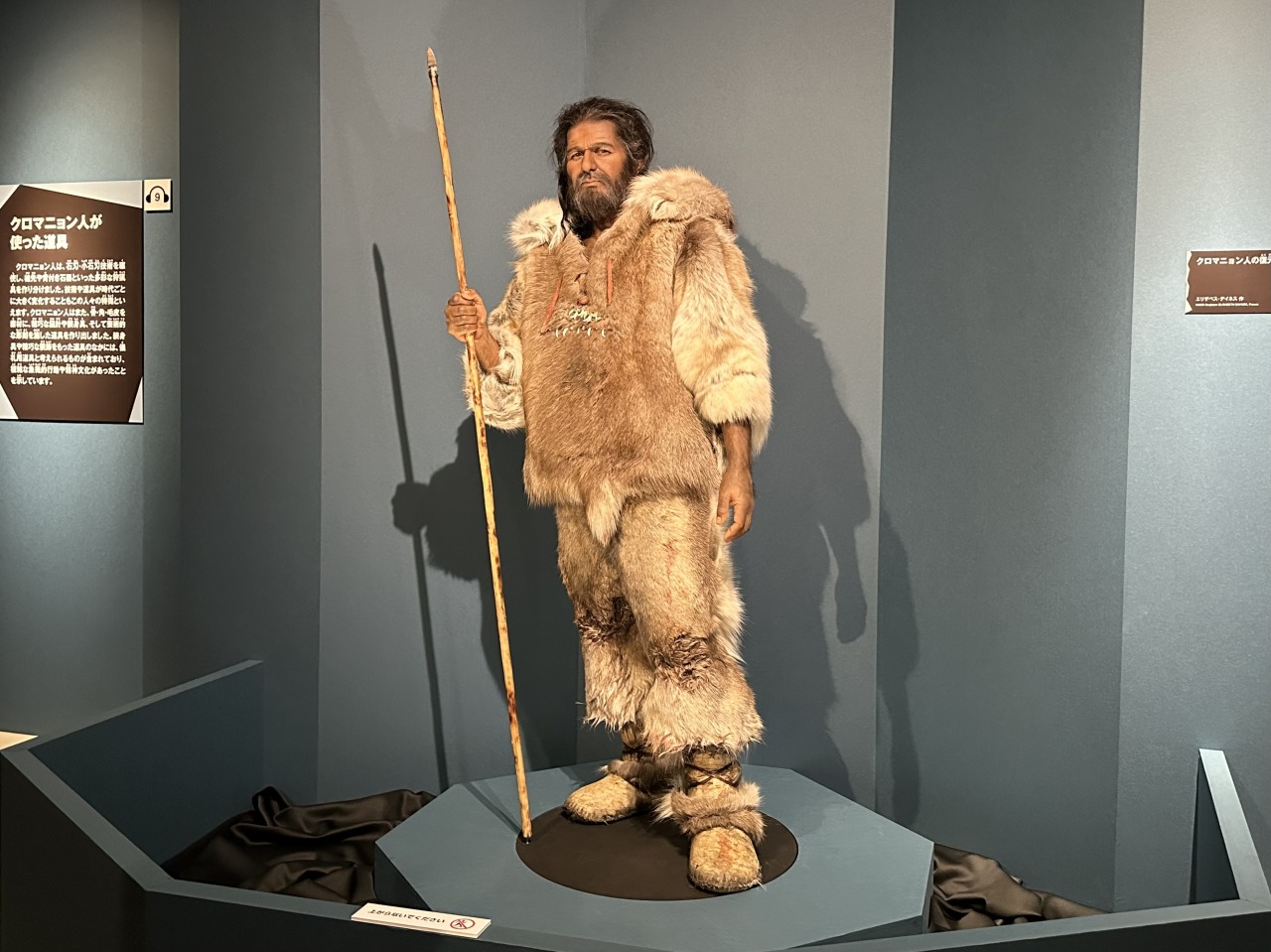
Reconstruction of Cro-Magnon man, National Museum of Natural History, Paris @2025 Sculpture ELISABETH DAYNES, France
Neanderthals had sturdy physiques and strong muscles, while Cro-Magnons had relatively slender builds and long limbs. At first glance, it seems that the former was better suited to surviving the harsh Ice Age, but what was it that determined the fates of the two? "Chapter 2: Neanderthals and Cro-Magnons" unravels this mystery with archaeological remains such as stone tools and ornaments, and the actual "La Ferrassie 1" and "Cro-Magnon 1," said to be the "world's most famous skulls" of two human species that lived in the same era, are on display in Japan for the first time.
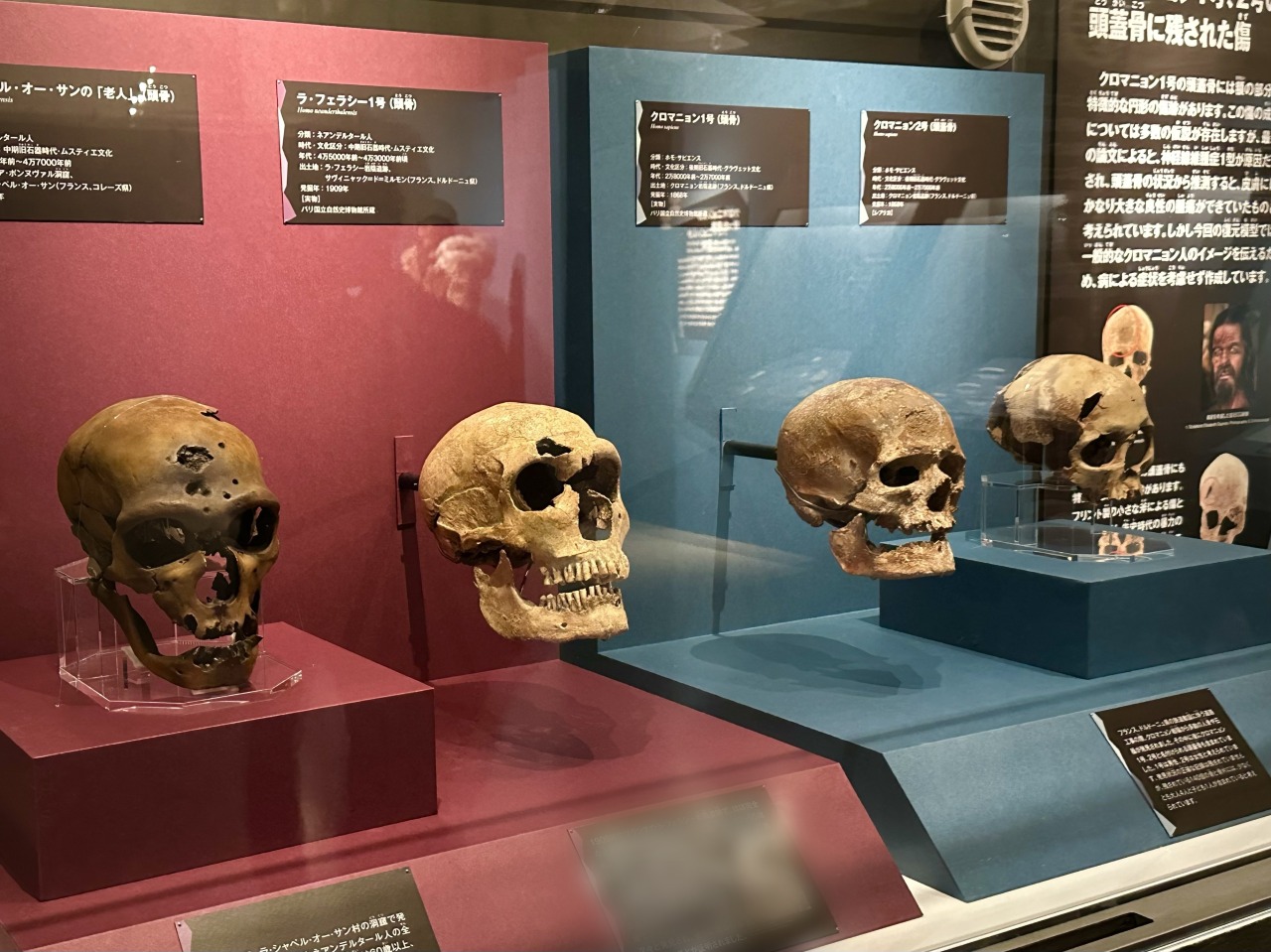
Exhibition view, second from the left: La Ferrassie 1 (Neanderthal) © MNHN National Museum of Natural History, Paris
Third from the left: Cro-Magnon 1 (Cro-Magnon man) © MNHN – JCDomenech National Museum of Natural History, Paris
"La Ferrassie 1" was discovered in 1909 at the La Ferrassie rock shelter in France, and is a nearly complete skeleton of a Neanderthal man who lived between 45,000 and 43,000 years ago. "Cro-Magnon 1" was also discovered in the Cro-Magnon rock shelter in France during road construction and is thought to be a man who lived between 28,000 and 27,000 years ago. Even a quick glance at the skulls on display reveals significant differences in the length of the skull, the width of the cheekbones, and the prominence of the brow bones, making this a luxurious opportunity to compare the two in person.
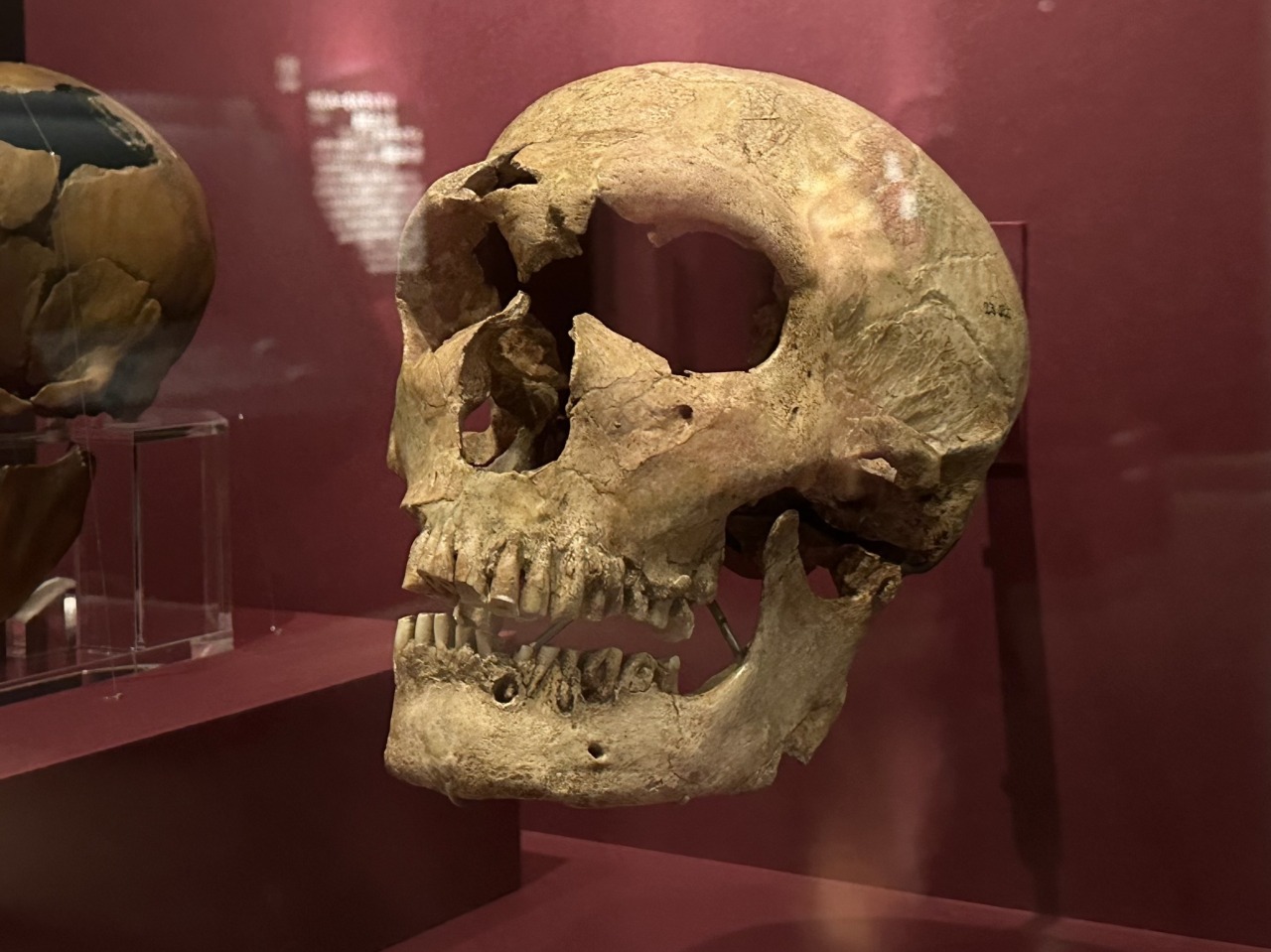
La Ferrassie 1 (Neanderthal) © MNHN National Museum of Natural History, Paris

Cro-Magnon 1 (Cro-Magnon man) © MNHN – JCDomenech National Museum of Natural History, Paris
The discovery of La Ferrassie 1, bent over in the ground, is said to have provided evidence that Neanderthals, who were traditionally considered barbaric and culturally inferior to Cro-Magnons, had the practice of burying their dead.

Exhibition view
The corridor connecting Chapters 2 and 3 has a video exhibit that provides basic knowledge about the Ice Age, which will be of great interest to beginners, as well as a corner where you can touch fossilized animal hair and teeth. It's fun to trace the unique contours of the teeth of woolly mammoths and aurochs and imagine what they ate and why they were shaped that way.
Chapter 3, "The Japanese Archipelago in the Ice Age," introduces the lives of humans who are believed to have arrived in Japan by approximately 38,000 years ago, and the lives of animals that lived at that time, including the Naumann's elephant, the Yabe giant deer, and the Japanese long-eared tiger ox, the three most extinct animals in Japan.
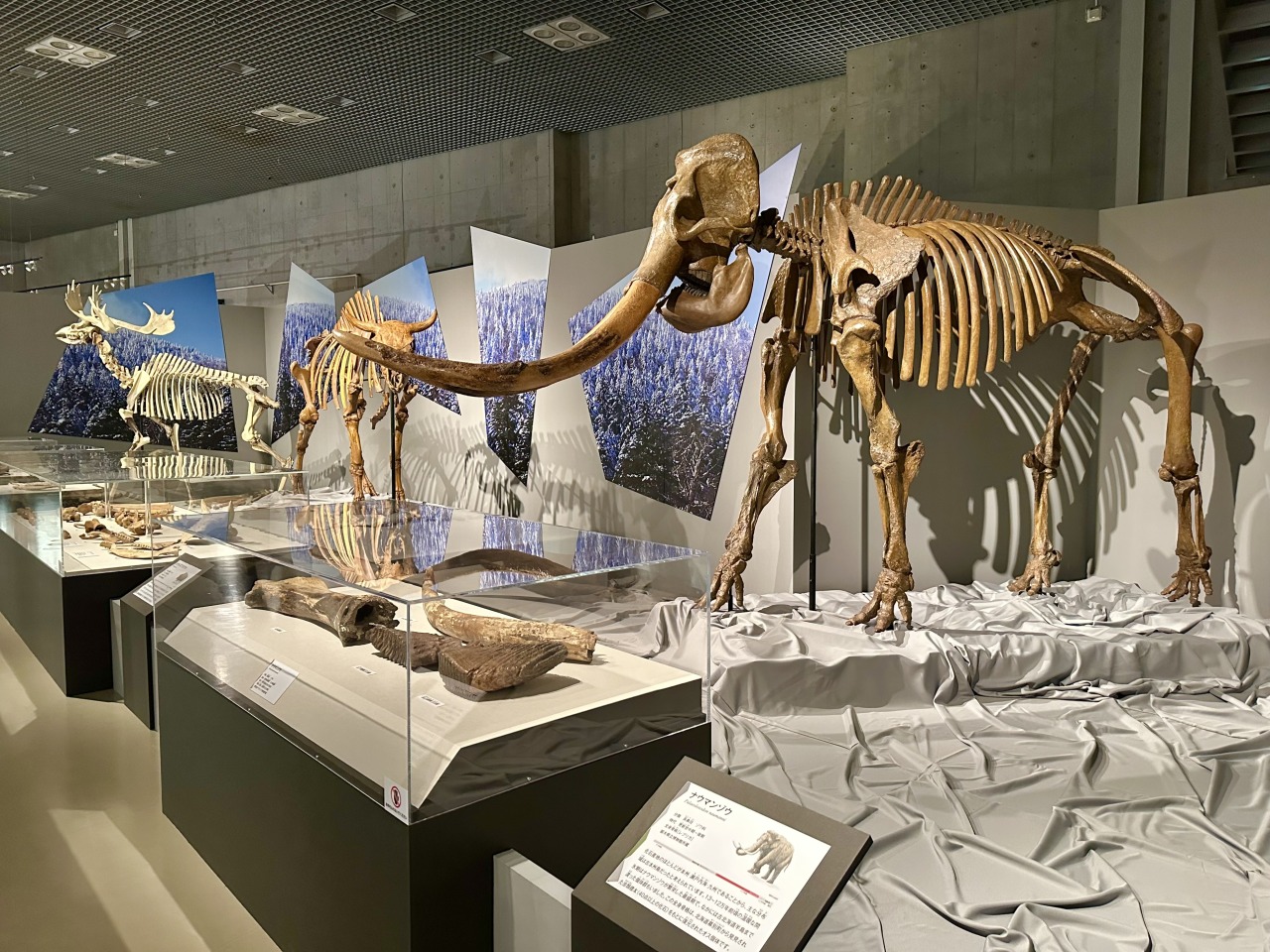
Exhibition view. In the foreground is a Naumann's elephant (full skeleton [replica]), Tochigi Prefectural Museum collection / ( right incisor, left mandibular third molar, right femur fossil [original]), Lake Nojiri Naumann's Elephant Museum collection
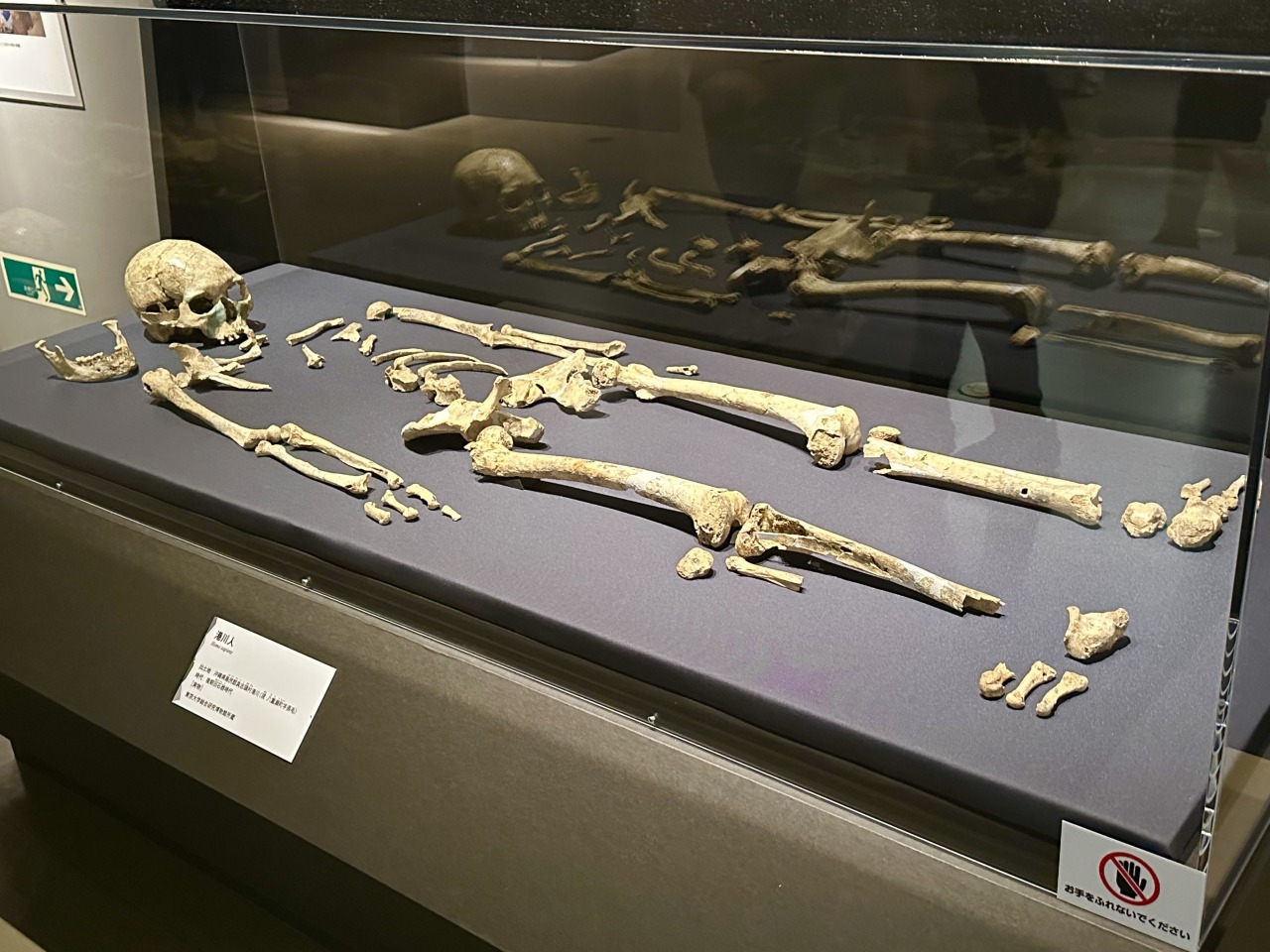
Minatogawajin [original], University Museum, The University of Tokyo
During the last glacial period, when the climate cooled significantly between 70,000 and 20,000 years ago, the development of ice sheets and glaciers fixed most of the Earth's water, causing sea levels in the Japanese archipelago to drop by more than 60 meters. The Japanese archipelago's appearance was said to be very different from today, with Hokkaido connected to the Eurasian continent and Honshu, Shikoku, and Kyushu forming a huge island known as Old Honshu Island. With such diverse environments stretching north and south across the Japanese archipelago as a backdrop, modern humans acquired a rich range of regional characteristics.
The comparative exhibit, showcasing the regional characteristics of stone tools from the middle of the Late Paleolithic period on the island of ancient Honshu, features items excavated from sites in Iwate, Osaka, and Kagoshima, but one item that particularly caught our eye was a stone blade excavated from the Suichoen site in Osaka.
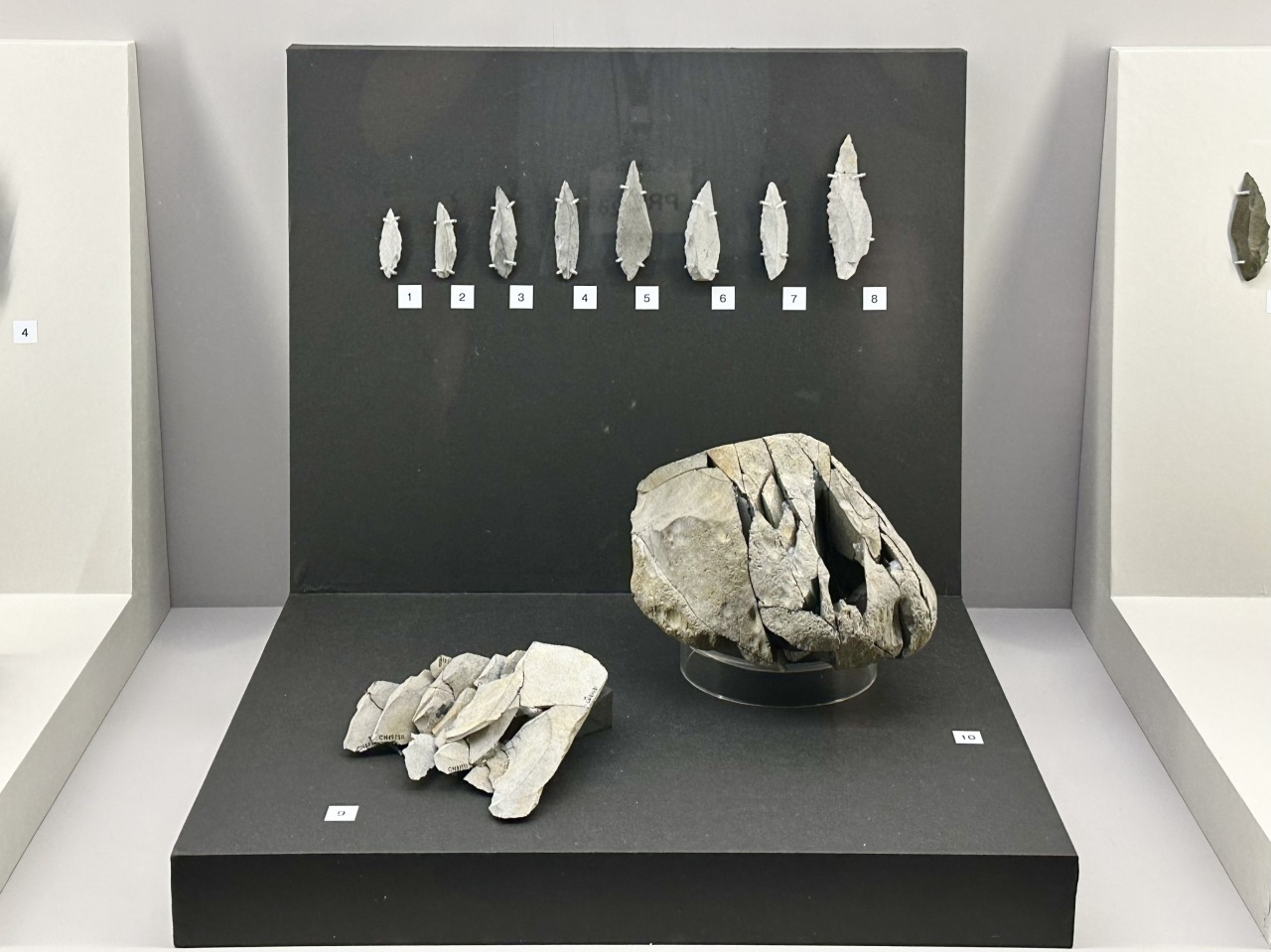
The actual material, owned by the Habikino City Board of Education, shows the connection between the Kokufu-type knife-shaped stone tool and the Setouchi technique.
In the Setouchi region, a technique called the "Setouchi technique" was developed to mass-produce flakes with strange shapes that spread out like wings from the point of impact when breaking a stone, unlike the stone blades used around the world. From spear tips produced using this Setouchi technique, distinctive stone tools known as "Kokufu-type knife-shaped stone tools" were made. The reason for their emergence is not clear, but it appears to have been a rare technique even on a global scale.
The second venue continued with the exhibit "Glacial-Interglacial Cycles and Vegetation," which included an enlarged model of a cute (?) heart-shaped pollen fossil, making it an exhibition with plenty to see right to the end.
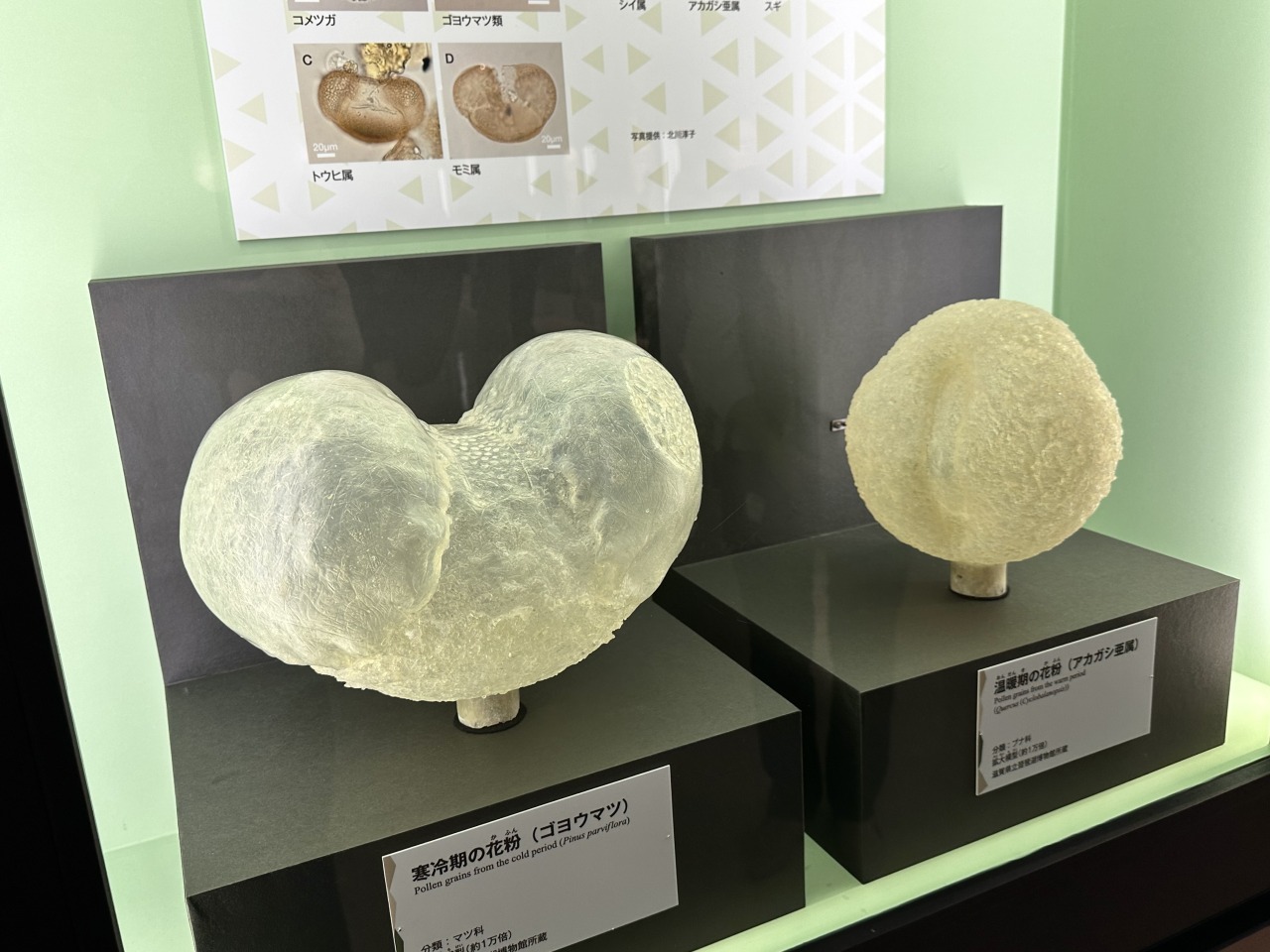
Exhibition view. On the left is an enlarged model of cold-season pollen (Japanese white pine), owned by Lake Biwa Museum, Shiga Prefecture.
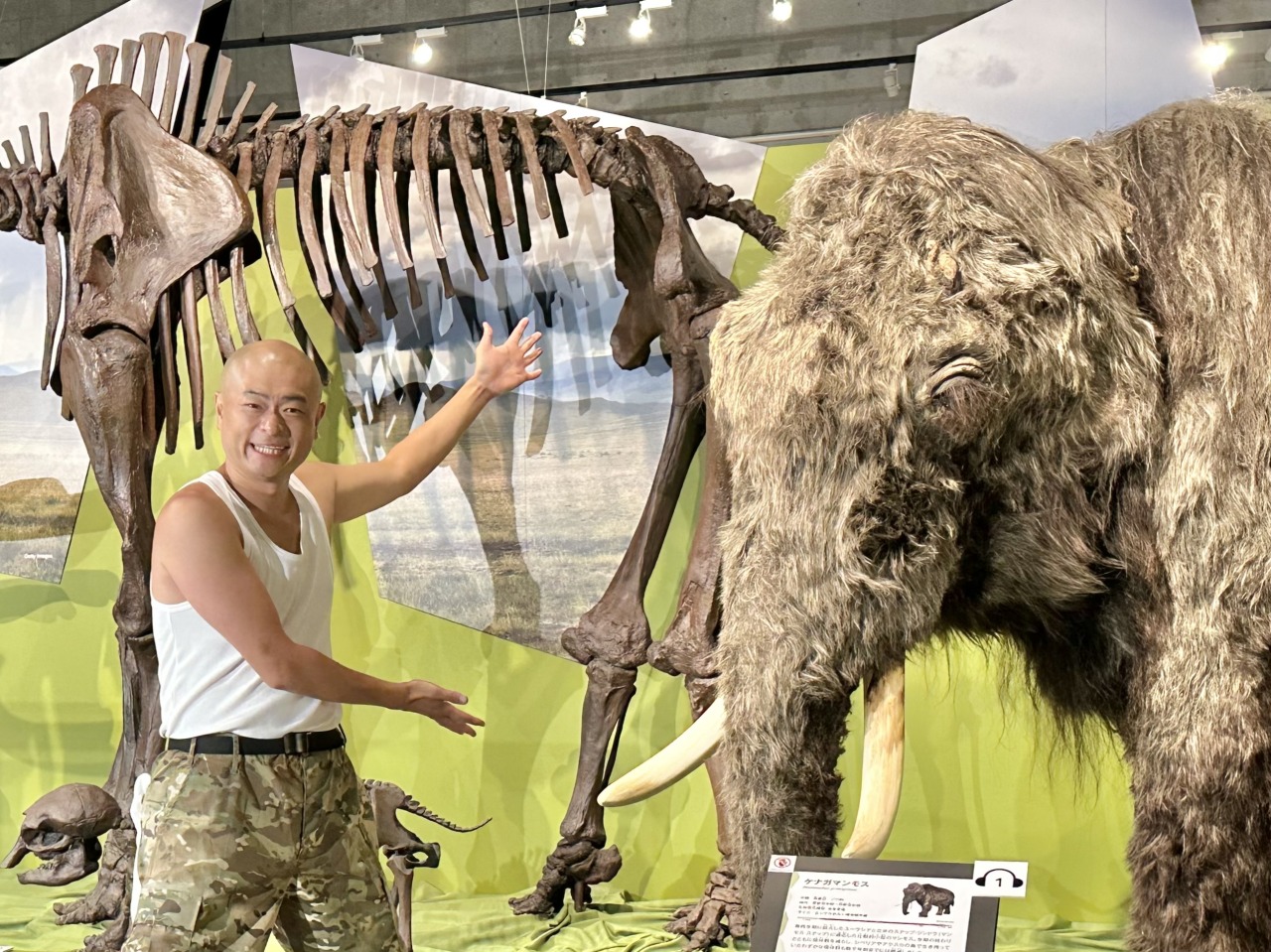
Ambassador Abareru-kun appeared at the press preview
Abareru-kun, a history-loving entertainer who serves as the ambassador for the exhibition, also gave it high praise, saying, "If you look carefully from the entrance to the exit, you'll probably learn as much as 50 hours of science class." "There's nothing to waste! Everything is worth seeing!"
"It would also be great for independent research or learning during summer vacation. The Earth is currently facing various challenges, but I think the animals of the Ice Age who survived such harsh times have something in common with us today," he said enthusiastically, and promoted the audio guide he provided, saying, "If you watch it with my fun narration and explanations, you will learn 100 times more and it will be 100 times easier to understand."
The special exhibition "Ice Age: The World as Seen by Humanity 40,000 Years Ago" will be held until Monday, October 13th (national holiday).
Special Exhibition "Ice Age Exhibition – The World as Seen by Humanity 40,000 Years Ago" Overview
| venue | National Museum of Nature and Science (Ueno Park, Tokyo) |
| Dates | July 12, 2025 (Sat) – October 13, 2025 (Monday/holiday) |
| Opening hours | 9:00 – 17:00 (last admission at 16:30) |
| Open at night | The museum will close at 7pm from August 8th (Friday) to 17th (Sunday) and October 10th (Friday) to 13th (Monday, national holiday) (last admission at 6:30pm). *The permanent exhibition will be open until 6:00 PM from August 9th (Sat) to August 15th (Fri). At other times, the permanent exhibition will be open until 5:00 PM (admission until 30 minutes before closing time). |
| Closed days | September 1st (Monday), 8th (Monday), 16th (Tuesday), 22nd (Monday), 29th (Monday) |
| ticket | Adults/university students: 2,300 yen, elementary, junior high, and high school students: 600 yen
*Free for preschool children. |
| Organizer | National Museum of Nature and Science, TBS, TBS Gloudia, Tokyo Shimbun |
| inquiry | 050-5541-8600 (Hello Dial) |
| Official Exhibition Website | https://hyogakiten.jp/ |
*The content of this article is current as of the date of coverage. Please check the official exhibition website for the latest information.
<Past coverage reports>
Report on the "Five Great Ukiyo-e Artists Exhibition – Utamaro, Sharaku, Hokusai, Hiroshige, Kuniyoshi" (Ueno Royal Museum). Many masterpieces by the stars who reached the pinnacle of ukiyo-e.
A list of past reports can be found here


